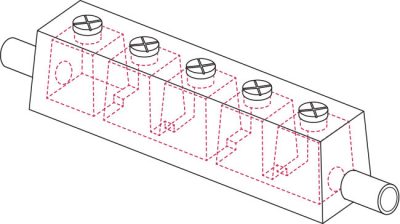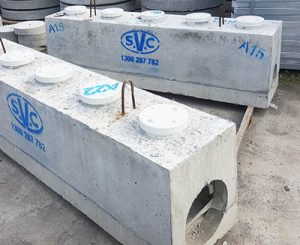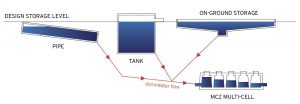The rise in urban density amidst Australia’s competitive housing market has contributed to an important, yet largely unforeseen issue: a dramatic increase in surface runoff and resulting impacts to existing drainage systems.
How does urban density cause this problem?
As more residents migrate to inner suburbs for education and work, property owners turn to sub-divisional development to meet the housing demand. The increase in building structures and impervious surfaces often leads to a reduction in soft, absorbent surfaces such as gardens and lawn, putting considerable strain on existing stormwater infrastructure that will not be able to accommodate excess volumes and higher flow rates of stormwater.
Addressing the issue
To combat the additional surface runoff, there are two options available;
a) to replace or upgrade the existing municipal drainage system, or
b) to install an on-site stormwater detention system to control the increased discharge rates.
The former option is impractical; who can forecast future capacity requirements? The latter option is a cost-effective and convenient solution, which leaves control in the hands of the developer.
What is on-site stormwater detention?
On-site stormwater detention (OSD) refers to the implementation of a stormwater control system on a sub-division or building site. The system effectively retards and controls the flow rate of stormwater that is discharged on-site during a storm or heavy period of rainfall. Generally, an OSD system will consist of a storage component, to store excess stormwater, and a detention component, which controls the flow rate of the stormwater discharge from the site.
Many councils now require evidence of OSD and drainage planning in the development application process, particularly on sites that may impact downstream properties. Existing council drainage infrastructure is dated, and not designed to cater for the amount of developments now present in dense urban areas. Well-designed OSD systems can limit the peak discharge rate of stormwater to meet the capacity of downstream drainage systems, while sites with little to no on-site detention are prone to flooding downstream.
MC2 Multi-Cell Detention Device


Developed in the early 1990s, the Phillips MC2 Multi-Cell detention device is a patented stormwater detention unit created by Dr Donald I. Phillips, Senior Lecturer of Water Engineering at Swinburne University, in conjunction with SVC’s manufacturing and engineering team.
The MC2 is a precast concrete box that is divided into five chambers or cells. These are defined by four equally spaced divider walls. A shallow slot at the bottom of each divider allows water to pass through the full length of the MC2.
These slots are staggered from side to side, ensuring that the water must pass diagonally across each cell. This promotes considerable turbulence which reduces the discharge rate of the MC2.

The MC2 Multi-Cell is an effective and economical solution that provides significant benefits to the developer, including:
- Easy, quick installation;
- Low to no maintenance requirements once installed
- Full control of time and expenditure schedules, as the detention system is implemented during the standard construction phase;
- Cost efficiency from a one-time product purchase fee and no ongoing charges;
- Little to no disruption of neighbouring properties, as all work is completed on-site;
- Quality control and peace of mind as the unit is configured in the factory and delivered as a fully assembled product.
Click here to download the full brochure and order form for the MC2 Multi-Cell device.



